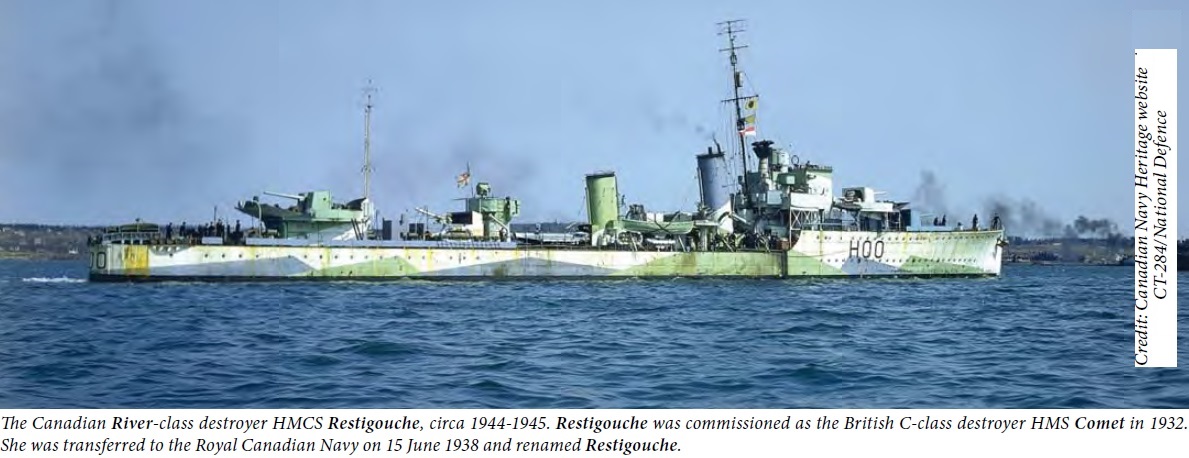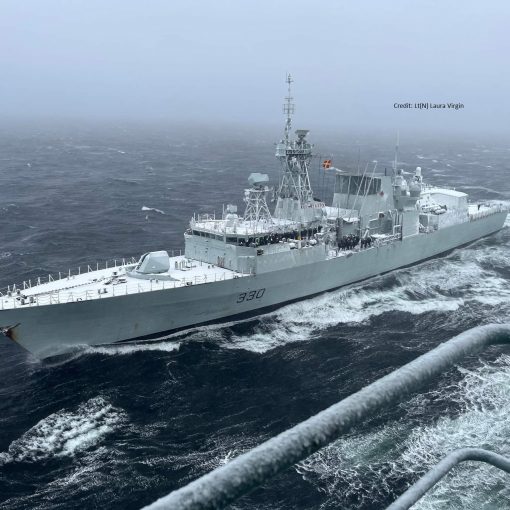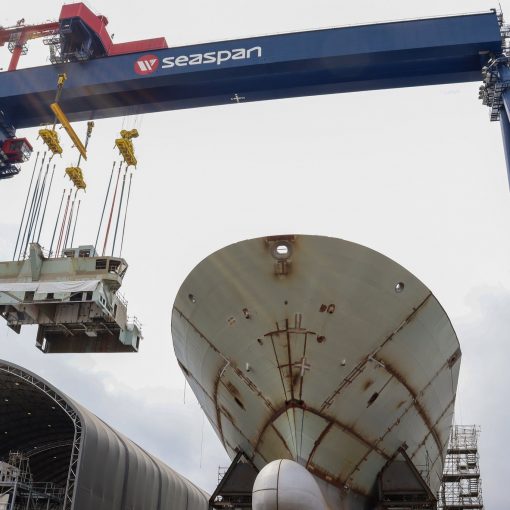There once was a small country surrounded by large powerful nations that had large powerful navies. This country had limited funds and could not afford to build nearly as many ships as it would need to effectively defend itself. So, rather than hope that one of these large powerful countries would come to its defence if need be, the country took a different approach. It innovated, and in doing that, it changed everything. The year was 1794. The primary warships of the day were ‘ships of the line.’ large, slow powerful ships, with 50 to 74 guns on three decks, and ‘frigates,’ which were faster lighter patrol ships with 28 to 32 guns on a single continuous deck.
The ship designer for the small country, one Joshua Humphreys, realised that the fledgling navy could not match the numbers of ships deployed by the larger states. The great powers of the day had over 200 ships of the line each, sometimes carrying as many as 120 guns. There was no way that the fledgling navy could afford even a few ships of this size and if it did build them, the likelihood of them surviving in battle was negligible. Frigates could survive by out running the big ships of the line. But the world powers had over 300 frigates each. Again, a small fleet of such ships would be totally overpowered in battle.
So, Humphreys took an imaginative and innovative approach. He designed ships that were neither ships of the line nor frigates. He designed a new class of ship based on his country’s needs. His ships were bigger and more powerful than frigates. They were deeper, longer, and narrower, and built with heavier planking. They were sleeker and faster than ships of the line. These new ships were two-deckers, able to carry 50, large, 24 pound cannon easily outgunning most frigates of the time. The country, of course was the United States and the ships were United States, President, Congress, Constellation, Chesapeake and the most famous, Constitution (Old Ironsides). These were ships that changed the direction of warship design world wide.
Today, Canada can’t afford a large navy in a world with some very powerful neighbours. Canada needs its own Joshua Humphreys as well as a government that will accept innovation as an answer. Canada needs a navy designed and built for its needs and not modified copies of ships designed for the navies of the United States, Britain, France or Germany. Canada buying military-off-the-shelf (MOTS) warships is comparable to Humphreys buying six frigates from Spain. Canada building ships designed specifically to provide area air defence for American, British or French aircraft carriers makes no real sense. If those countries need such ships they are better equipped and can afford to build them themselves. For Canada to spend the money to buy ships, in order to make a token gesture to foreigners’ navies is simply nuts.
Canada has the largest coastline in the world at over 202,000 km. It has coastlines on three oceans. The East and West Coast naval ports are 7,605 sailing miles apart with a continent, three countries or one ice-chocked Arctic Ocean between them. We need a navy capable of patrolling all of our coasts. Our government keeps talking about procuring up to fifteen new warships. I guess that in government-speak that is supposed to sound like a lot. What it really means is each ship must patrol 13,467 kilometers of Canadian shoreline. Add a 200 nautical mile (370 km) EEZ (Exclusive Economic Zone) and a .5 km depth to search for submarines and you have a patrol requirement of 2,491,333 cubic kilometers of ocean. And, that assumes that these new ships aren’t traveling around the open ocean playing a thankless role as nursemaids to American aircraft carriers.
I know what you are thinking. We also have four submarines. Ok! make that 1.966.842 km3 each. So much better!
I am of course only counting ships that could actually defend themselves and project some authority. Somehow using a megaphone to yell at a Russian, Moskva-class cruiser, a Chinese, Kunming-class destroyer or an American, Ohio-class submarine, isn’t going to encourage them to go away.
Consider this as an alternative.
First, in respect to our responsibilities to our allies which, regardless of my previous remarks is of course necessary. Canada should build four of the new frigates. They should be designed for command and control and area air defence, and they should sail in multinational task forces in order to show Canada’s commitment to alliances and world order. That being said; it is a token mission and only deserves a token commitment. Instead of building the other 11 frigates, we should build 20 to 24 much smaller ships designed for patrol of Canada’s coasts and support of Canadian defence needs. These ships should be corvette sized, or, in modern parlance, Littoral Combat Ships (LCS) -- ships equipped with missiles for anti-air and anti-ship defence and with anti submarine detection and defence capability. And they should be designed for the purpose.
Why Corvettes.
Remember Joshua Humphreys? Humphreys re-engineered the ships to meet the need and Canada can too. There are five logical reasons for Canada to build smaller ships over and above the obvious one, which is that they are cheaper to build and cheaper to operate and we can afford more of them.
One, we are famous for our corvettes. Altogether Canada produced 122 corvettes during WW2 that served extensively and admirably in the war-long Battle of the Atlantic. Flower-class corvettes helped sink 47 German and 4 Italian submarines. Canada was the respected small ship navy then and can be a respected small ship navy now.
Two, miniaturization. The frigate of the 1990s and early 2000s has more fire power than a 1940s battleship. Weapons systems like everything electronic are getting smaller, more compact and at the same time, more powerful. Remember the ‘Diskman’ of the 1990s that held the music of one CD vs. Spotify today. Today it takes less ship to hold a lot more power. The corvette of today should easily do what destroyers did twenty years ago.
Three, offence vs defence. We need ships able to defend themselves. In our history we have not ever started a war with anyone and it is simply not going to happen in the foreseeable future. We don’t need warships capable of attacking or fighting off fleets of enemy ships or planes. Like Joshua Humphreys, we couldn’t anyway. So, we don’t need 40 VLS launchers when 8 or 12 will do and we don’t need room on every ship for a hundred commandos. (Totally off topic, we don’t need ‘Strike’ Fighter jets either. Emphasis on the word ‘Strike’. But that can wait for another day.)
Four, drone technology. Air, surface and subsurface drones are already here, and they are going to change naval warfare. It is happening and happening quickly. With our current 15 ship plan and given the speed at which the Canadian government acquires military equipment, the new ships will be obsolete before they get wet. Why not build ships for the twenty-first century and build them initially for the drone environment? Consider small air, surface and sub-surface drones attached to a not much bigger corvette mother ship. One ship, by dispersing armed drone submarines and armed drone helicopters, could patrol and defend an area many times larger than one traditional warship can today.
Five, marine technology. The newest marine technologies are slowly going to be adopted by navies as they always have, but the military is historically dogmatic and slow to see and adopt change. Sail to steam, battleships to aircraft carriers, waited until disaster struck before the establishment capitulated. New technologies are here now. Consider X-Bow technology which provides more stability in rough seas than the typical flared navy bow. Consider LNG fuel, or sulphur scrubbers for more environmentally sensitive ships, speed nozzles for power efficiency, fuel and solar cells for power and sandwich-plate (composite metals with polyurethane cores) for longer life and lower maintenance costs.
Green LNG powered X-Bowed ships won’t look like today’s warships, but maybe it is time for change.
Canada is not going to start any wars. We need ships designed for anti-piracy and anti-smuggling patrols. We need ships to shadow foreign ships and for hunting trespassing submarines and, if need be, we need ships that can help our friends. We need ships that are armed well enough to be a deterrent and to defend themselves against any potential threat. But, like Humphreys’ situation we aren’t going to build a navy big enough to match those of other states, but like Humphreys we can change the concept.
The Ulstein /Vigor cutter design wasn’t chosen by the USCG. It doesn’t look like a coast guard cutter is supposed to look. Humphreys’ frigates didn’t look like British frigates either. In Humphreys’ day, Europe was the establishment and the United States was the innovator. Today the United States and Europe are the establishment. Maybe Canada should be the innovator?





